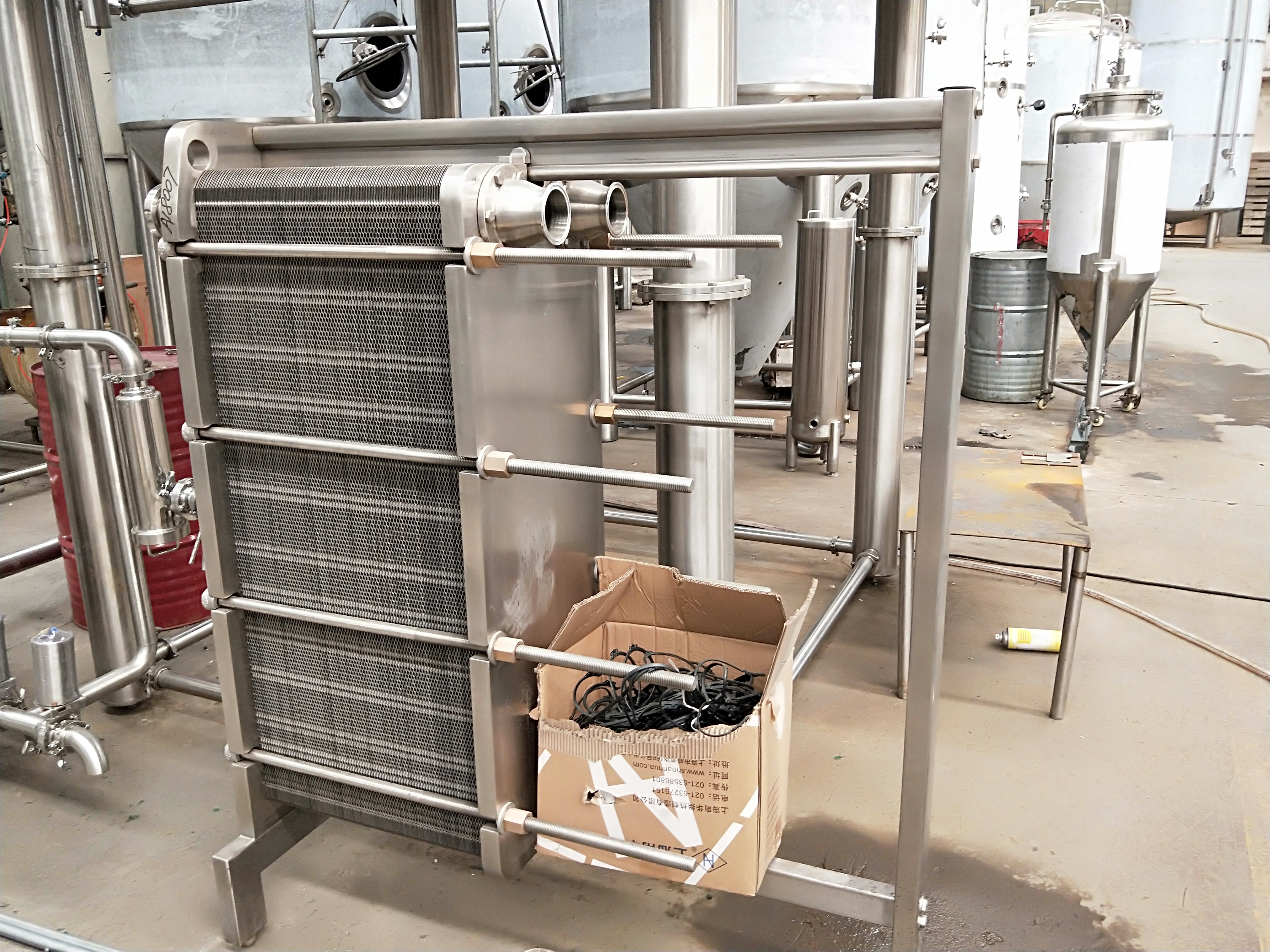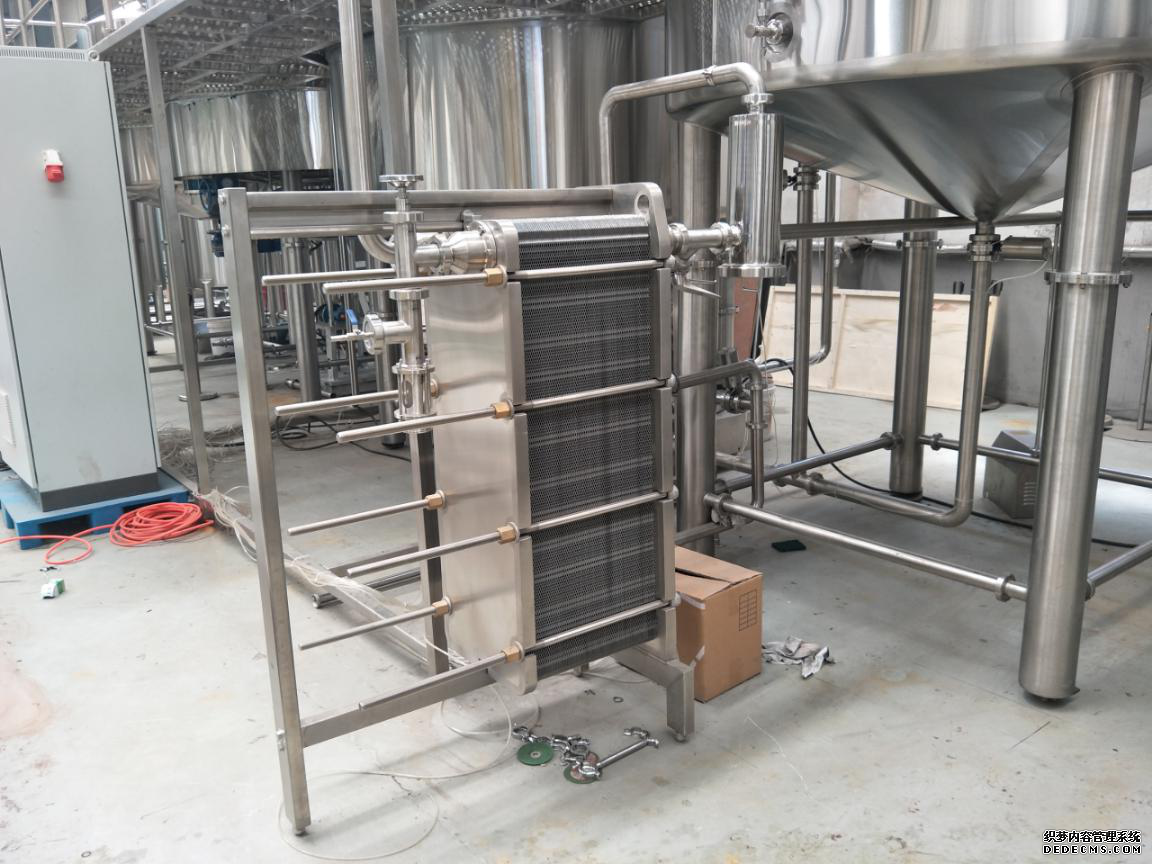Heat exchanger in your brewery beer equipment
The Oxford Companion to Beer Heat Exchanger, a piece of brewery equipment designed to quickly raise or lower the temperature of wort or beer.

Heat exchangers in breweries are often referred to as "flat heat exchangers" because they are built as a series of plates; a liquid liquid flows along the other side of the liquid flow along the other side. A heat exchange takes place across the plates.

The most common heat exchanger is found in the brewhouse. Hot wort at approximately 95℃ is a heat exchanger, where it is cooled by cold water and / or a refrigerant coming along the reverse side of the plate in the opposite direction. The wort becomes cool (eg, to 12℃) and ready for fermentation, and the water is heated to 80℃ and is returned to a hot water tank, ready to be used in the next brew or elsewhere in the brewery . On average, heat exchangers will be sized so that the entire contents of the kettle can be cooled to temperature in 45 min or less. A heat exchanger is very energy efficient because of the heat originally used to bring heat to the brewery. Using refrigerants such as glycol, heat exchangers can also be used to cool beer to low temperatures after fermentation, say from 12℃ to -1℃, for cold ripening. Heat exchangers can be used in many aspects of the brewing process to heat and cool water.
Although heat exchangers are the most common heat exchangers, these heat exchangers are also used as part of the makeup of flash pasteurization units, which heat the heat quickly to pasteurize it, hold it for a short period of time as it flows through pipework, and then quickly decrease the temperature again.
Amy
[email protected]




.jpg)

Get In Touch